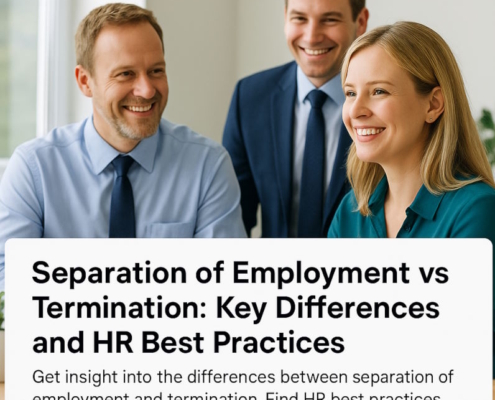Introduction
One of the methods used by California courts to decide whether a vendor or employee is truly an independent contractor or an employee is the ABC test. Under both federal and state employment laws, employees are entitled to legal protections like minimum wage, overtime compensation, and other benefits. It’s not the case with independent contractors.
In an attempt to avoid these responsibilities, businesses have been known to “misclassify” workers as independent contractors.
The statute will consider you an employee based on the ABC test unless:
- Under the terms of the agreement and in practice, you are not subject to the employer’s directions or control over how you complete the work.
- You work for your employer outside of their regular business hours, and
- Typically, you work for a self-established business that offers similar specialized services to the work you are doing.
The ABC test is not always applicable in California when it comes to independent contractor misrepresentation. Others employ an alternative test.
How does California’s ABC test function?
In California, the ABC test is typically used to differentiate between independent contractors and employees. Any clauses in the employee-company contract that specify the employee’s position are ignored by this test. Rather, the ABC test considers the three elements listed below:
- The authority that the business has over the individual,
- Whether or not the task is related to the company’s normal operations, and
- Whether the individual often does this kind of job as a freelancer
Courts infer that workers qualify as employees under the ABC test. These three elements must be demonstrated by the hiring organization or alleged employer. You can only be considered an independent contractor if the business can demonstrate all three pillars. You remain an employee if they can’t.
It is worthwhile to carefully consider each of these elements.
There are several methods to differentiate between independent contractors and employees besides the ABC test. The state’s labor code has recently changed to exempt some professions and business partnerships from passing the ABC test. In these situations, the traditional Borello check is still applied.
1. Absence of employer control while performing work.
Control over the employee by the supposed employer is a crucial component of the ABC test. A worker is far more likely to be an employee if they wield greater control. However, the hiring organization does not have to have complete control over the specifics of the task. The hiring organization must demonstrate that it lacks the necessary authority to make the individual an employee.
Example 1: The driver of a truck was considered an employee since the company that hired him mandated that he maintain a clean truck, go to the dispatch department for assignments, and obtain permission before transporting people. Additionally, if the driver arrived late, neglected to notify dispatch, or broke the trucking company’s stated policy, the employing entity might terminate the partnership.
Example 2: Everything needed to manufacture children’s clothes was supplied to sewers and knitters. Although the workers were free to work from home at their own schedule and pace, they were still considered employees since they were obligated to stick to a set of rules.
Example 3: A historic renovation expert who established his own hours, worked unsupervised, purchased supplies with his own company debit card, and turned down a job offer from the company in order to manage his own work was not adequately controlled by the construction company.
2. The work is not part of the employer’s regular operations.
Employees are workers who perform services as part of the hiring entity’s regular business operations. Other people would typically consider these workers to be company employees.
Example 1: A pastry shop that regularly employs cake designers to assist with its personalized creations is hiring employees.
Example 2: When a bakery employs a plumber to fix a leak in the restroom, they are engaging an independent contractor.
Real employees would be swiftly replaced from their place of employment if labor rules permitted workers to offer such assistance as independent contractors and forego their legal privileges. Additionally, it would put pressure on rival businesses to follow suit, which would lower wages, job stability, and safety at work.
3. Normally, you work on projects similar to the ones that are offered.
Employers must demonstrate that the purported workers voluntarily chose to perform the services by way of a generally established occupation or trade of their own. Employers must do more than simply demonstrate that they did not stop their employees from participating in such activities.
The term independent contractor is often applied to people who have decided to work independently.
Example 1: A construction company hired workers to install the siding, and they came with their own equipment. The installers did not have any business-related assets, such as a physical site or phone number, and they were only paid by the building company. The people who installed the siding were employees.
Example 2: A team of vehicle repair appraisers possessed their own equipment, company cards, home offices, and operating permits. They were also requesting business from other businesses. Since the appraisers did not have prior employment history, the corporation that hired them wasn’t automatically their employer.
When should one not utilize the ABC test?
The ABC test does not apply to many kinds of employment. The Borello test is used to determine the correct employment status of workers who are excluded from the ABC test.
109 different kinds are excused from using the ABC test as a result of Assembly Bill 2257. Among the most significant of these exclusions are those for:
- Entertainers and creative artists,
- The majority of people who provide feedback to aggregators of data aggregators,
- Risk managers, auditors, and insurance underwriters,
- Physicians, dentists, surgeons, and veterinarians, among others,
- Certain certified experts,
- Broker-dealers of securities who are registered,
- The majority of direct salesmen,
- Distributors and carriers of newspapers,
- Graphic designers,
- Grant writers,
- Marketers,
- Real estate appraisers,
- Travel agents,
- Freelance editors and writers.
Under some conditions, the ABC test may apply to even these personnel. Furthermore, the ABC criteria are not applicable to collaborations between:
- Most legitimate business-to-business contractual arrangements,
- The majority of service providers and referral agencies,
- Employees offering specific expert assistance to hiring organizations,
- Two people or organizations working together under a contract that solely addresses one engagement, and
- Specific subcontractors and building contractors
The Borello test typically replaces the ABC test when it is not applicable.
The Borello test
In the past, California distinguished between independent contractors and employees using the Borello test. The Supreme Court developed this “entirety of the conditions” method in 1989. To ascertain a worker’s status, it considers all pertinent factors. These elements center on the extent to which the employee is under the alleged employer’s control.
Has anything changed recently in this field of law?
According to California state law, the criteria used to differentiate between independent contractors and employees have indeed evolved quickly. The California Supreme Court established the Borello test in 1989 to settle these misclassification cases.
However, because it took into account every element involved, the multifaceted Borello test proved challenging to utilize. Because further instructions were absent, employers and employees could not easily decide their employment status.
In 2018, the issue was revisited by the Supreme Court of California in Dynamex Operations West, Inc. vs Superior Court. In that court ruling, the ABC test was implemented. To address separate misclassification concerns, a number of other states have also implemented this test. The ABC test used by the Court precisely mirrored the Massachusetts version.
In 2019, the California Legislature passed Assembly Bill 5 to solve the misunderstanding. For cases involving misclassification, this law formalized the Dynamex ruling. But it also differentiated a wide range of professions that are still subject to the Borello test.
After issues with the new law were discovered, Assembly Bill 2257 was enacted by the Legislature in 2020. The ABC test was extended to even more professions with this new bill. According to California’s labor regulations, it also applies retrospectively if it would absolve a company of liability.
If my classification is incorrect, what can I do?
If you were mistakenly assigned the status of an independent contractor in California, you have the following options:
- Lawsuit for misclassification against your alleged employer, or
- Submit a claim to the DLSE’s (Division of Labor Standards Enforcement) Labor Commissioner.
Such claims may demand reimbursement for unpaid salaries along with other benefits that you were denied by your employer, interest on that sum, and legal fees.
Claims under California’s wage & hour rules must be submitted within three years. The claim must be submitted within four years if it is for the violation of a contract.
A civil penalty of $5,000 to $25,000 may be imposed on your employer for knowingly misclassifying you being an independent contractor.































